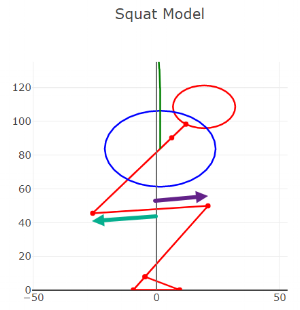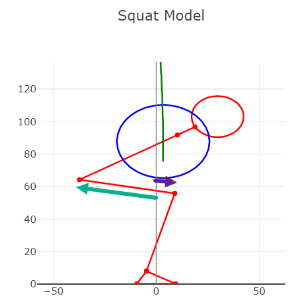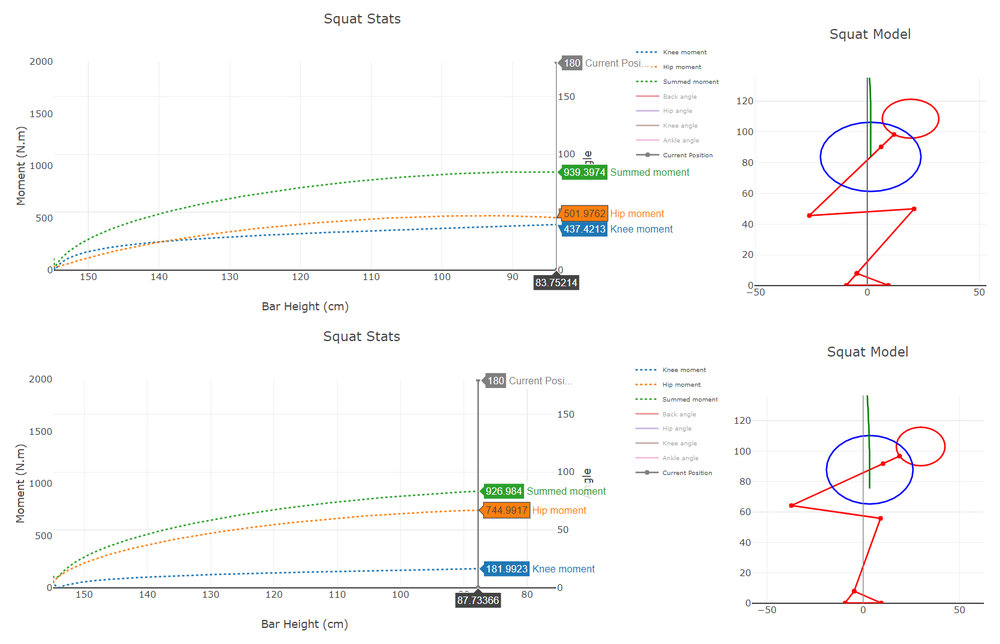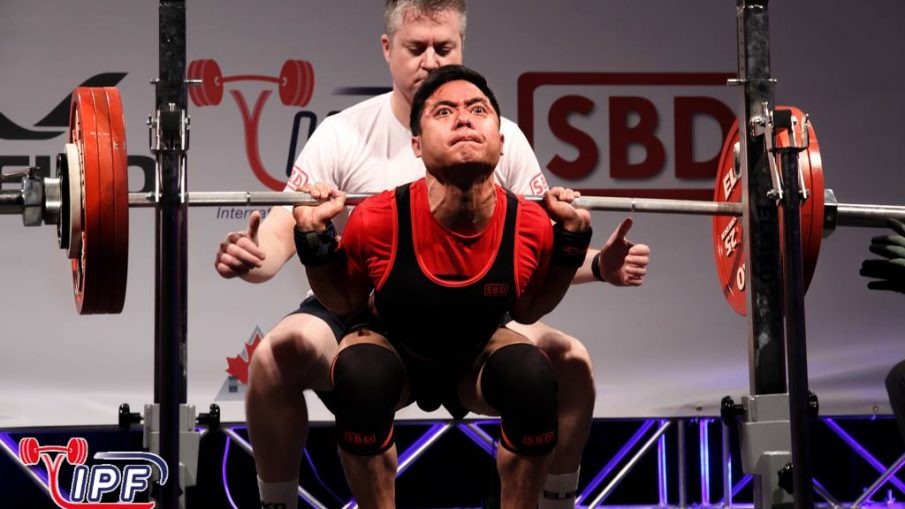Introduction
One common technical fault you’ll see in the squat is the knees and hips shooting back when coming out the hole. By shooting back I mean that the knee joint is opening up at a rate that isn’t proportional to how much the barbell is moving up against gravity. So the knee extension is causing horizontal movement of the body, which is a waste of energy. Typically, this also causes a change in torso angle as it tips over more. And sometimes, this also causes the barbell to go forward of the mid-foot, which is also a waste of energy.
How Did This Start?
Why this initially started to occur can be due to a number of reasons. It’s possible the lifter was taught to squat this way. It’s possible that the lifter didn’t know how to squat and naturally did this. It’s possible that there’s a lack of tightness in the mid-section, which causes inefficient force transfer from the ground into the barbell. It’s possible that the lifter has a weak muscle and body is trying to compensate around it. And it’s possible that it’s a combination of the things listed above. One thing is for sure, as the lifter does more and more reps this way, that movement pattern becomes a habit.
Moment Arms

This 1st diagram shows a typical squat, when in the hole. The purple arrow shows the moment arm of the knee joint and the green arrow shows the moment arm of the hip joint. A moment arm is the length between a joint axis and the line of force acting on that joint. You can simplify this to, the farther the joint is from the mid-foot, the more work the muscles of that joint have to do. So in this diagram, the arrows are fairly similar with the muscles surrounding the hip joint having to do slightly more work than the muscles surrounding the knee joint.

This 2nd diagram shows a typical squat, when the knees and hips shoot back. As you can see, the purple arrow has gotten much smaller and the green arrow has gotten much bigger. So now the muscles surrounding the knee joint have to do a lot less work and the muscles surrounding the hip joint have to do a lot more work. In addition, you can see the torso angle has changed with it being less upright. Also, the dark green line shows that the barbell has traveled forward slightly.

Taking it further, we can look at some actual numbers from an example scenario. In the 1st graph above, you can see the moment arms of the good position when in the hole as 437 for the knee, 502 for the hip, and 939 for the sum of the 2. In the 2nd graph, you can see the moment arms of the bad position when out of the hole as 182 for the knee, 745 for the hip, and 927 for the sum of the 2. So, even though the total summed moment arms barely changed, the amount of work at the hip joint drastically increased (+48%) and the amount of work at the knee joint drastically decreased (-58%).
So What Is This Telling Us?
If you’re able to maintain a good position with lighter weights but this occurs at heavier weights, then you’re probably dealing with weak quadriceps. The quadriceps are responsible for the extension of the knee joint in the squat. If the quads aren’t strong enough to extend the knee joint when the knee moment arm is high, then you’ll either fail the lift or shift to a position where the moment arm is lower. So your body shifts from the 1st position to the 2nd position to finish the lift, by allowing the stronger hip muscles to take on more of the load.
So How Do We Fix This?
If you want to fix this issue, then 1st you need to break the bad habit. You need to drop the weights being used on your competition squat to a range where you can perform every rep with proper form. This will begin to ingrain the new movement pattern. You can also use exercises that will help reinforce the proper form, like tempo squats. Next, you want to work on strengthening the quadriceps. This can be done with many exercises, like high bar squats, safety squat bar squats, front squats, tempo squats, Bulgarian split squats, and more. But, the caveat is that you need to also perform these exercises with proper form. If your knees and hips are also shooting back on your front squat or pause squat reps, then you aren’t getting the desired effect. Just like in the competition squat, you need to drop to a weight where you can perform every rep with proper form. This is what will reinforce the proper form and strengthen the quadriceps, so you can maintain that form with heavier weights.
So How Long Will This Take To Fix?
It depends. Everyone gains strength and builds technique at a different rate. Also, there are different levels of fixing it. I consider Level 1 to be a state where the lifter can’t perform the proper form, regardless of the weight on the barbell. Level 2 is a state where the lifter can perform proper form when they’re farther from failure (RPE 5-7), but form breaks down when they’re closer to failure (RPE 8-10). And Level 3 is a state where the lifter can perform proper form, regardless of the weight on the barbell. It might take a lifter 1-2 months to go from Level 1 to Level 2 but might take 9-18 months to go from Level 2 to Level 3. So the best things you can do are, make sure you’re doing every rep with the proper form and that you stay patient.
“A bad habit never disappears miraculously, it’s an undo-it-yourself project.”
-Abigail Van Buren

